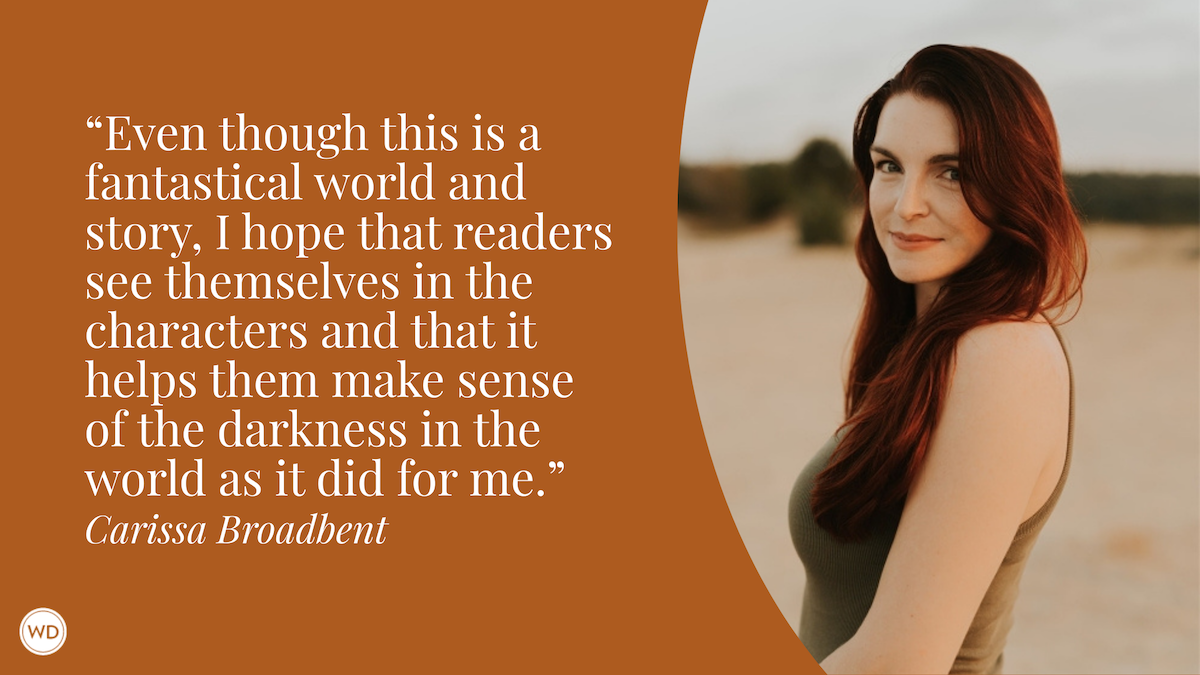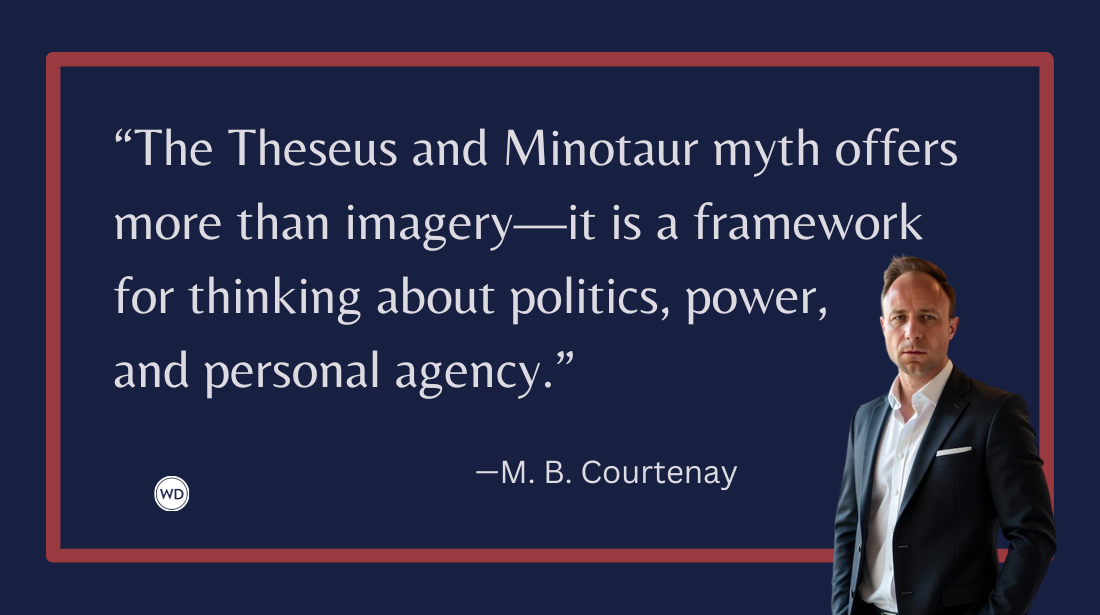Rewriting the 7 Rules of Dialogue
Understand why and how to break these 7 common rules about writing dialogue, and you’ll write more effective, nuanced and engaging character conversations.
Most of us have heard the typical advice about writing dialogue—make sure your characters don’t all sound the same, include only what’s essential, opt for the word said over other dialogue tags, and so on.
While these blanket suggestions can get you headed in the right direction, they don’t take into account the subtleties of subtext, characterization, digressions, placement of speaker attributions, and the potentially detrimental effect of “proper” punctuation.
So, let’s delve into the well-intentioned advice you’ll most commonly hear, and what you need to know instead.
Rewriting the 7 Rules of Dialogue
1. “Dialogue should stay on topic.”
In real life, we talk in spurts, in jumbles, in bursts and wipeouts and mumbles and murmurs and grunts as we try to formulate our thoughts. We stumble and correct ourselves. We pause and reflect. We backtrack. We wander into tangents and then get back to the point.
It’s often said that on the page, good dialogue doesn’t do the same thing. But I disagree.
Tangents reveal character traits and priorities. If dialogue is too focused and direct, it’ll become predictable. Readers want to see the motivations, the quirks, the uniqueness of each character. The prudent use of digressions can add texture to a story.
People don’t always respond to what was said or to the questions they’re asked. They interrupt, change the subject, and attempt to stay on their pre-determined course even after the conversation has taken a turn in a different direction.
“How come it’s so hot out here?”
“It’s supposed to hit 90 today. Hey, listen, do you want some lemonade?”
“Ninety? Man, I hate this. Remind me why we left Maine in the first place.”
“Ninety’s not so bad. So, lemonade?”
Even in this brief exchange, multiple conversations are taking place. They overlap, reveal the character’s attitudes, and add verisimilitude to what’s being said.
At times you’ll want your dialogue to pool off into tributaries. This doesn’t mean it’s unfocused or random, but rather that it’s layered with meaning to show the goals of the characters, the social context of the conversation, and the subtext that’s present in the scene.
In fact, sometimes you’ll want your characters to discuss trivial things. Subtext brings depth to triviality.
In Hollywood, there’s a saying: “The scene is not about what the scene is about.” In essence, this means that what the readers (or viewers) are witnessing on the surface is not what lies at the heart of that scene.
Scenes that are primarily about romantic tension will often have dialogue in which the characters banter or engage in small talk. But in those instances, it’s what’s going on beneath the surface that matters most. Identify the core tension of the scene, then plumb subtext and use apparent triviality to your advantage in dialogue. (Caveat: This, like many literary techniques, should be used in moderation. There’s no need to show subtext in every scene, nor should you. Chase scenes, for instance, are best approached as what you see is what you get. An attempt to layer in subtext will only become a distraction.)
Don’t be afraid of digressions. Use them to insert red herrings, foreshadow important events, reveal clues about what motivates your characters, or add new dramatic elements to the storyline.
IndieBound | Bookshop | Amazon
[WD uses affiliate links.]
2. “Use dialogue as you would actual speech.”
Although in real life people speak primarily to impart information, in fiction a conversation is not simply a way for something to be expressed—it’s a way for something to be overcome. As you’re writing, rather than asking yourself, “What does this character need to say?” ask, “What does this character need to accomplish?”
A woman wants to confront her husband about his overspending; he wants to watch the game.
The cops are questioning a suspect; she’s being evasive.
In both of these instances, the mutually exclusive goals of the characters create tension that affects how the conversation will play out.
When determining your character’s response to stimuli, remember that his agenda toward the other person will trump the topic of conversation.
“There’s this crazy thing they invented called the Internet. You can look stuff up on it. You should check it out sometime.”
“Ah. Now, that was sarcasm, right?”
“Um. No.”
“But that was?”
“What do you think?”
“Wait—was that?”
She looked at me disparagingly.
Words can be barbs. They can be sabers. They can be jewels. Don’t let them be marshmallows that are just passed back and forth.
Give each character a goal. The speaker might be trying to impress the other person, or entertain her or seduce her or punish her. Whatever it is, the agenda—whether stated explicitly or not—will shape everything that’s said.
“You’re not going to tell him about us, are you?”
“He’ll find out eventually. I should be the one to—”
“No. Listen, we have something special here. Do you really want to lose it?”
“It’s not just that. I have the kids to think about. What’s best for them.”
Here, neither question is answered directly. Often you can move the story forward more effectively by having the characters respond in a way that implies an answer, showing that they’re reading between the lines of what was said or have questions of their own.
3. “Opt for the speaker attribution said over all others.”
It’s true that you’ll want to avoid cluttering your story with obtrusive speaker attributions. Having a character consistently chortle, exclaim, retort, chip in, quip and question rather than simply say anything will become a distraction. Readers will stop being present in the story and will start searching for your next synonym for said. They get it. They know you own a thesaurus. Just tell the story.
On the other hand, the use of said can become tiresome when it appears repeatedly on the same page. And, when used improperly, it can also be a giveaway that you’re an inexperienced writer.
“Bob said” does not equal “said Bob.”
To hear how your dialogue reads, try inserting the pronoun instead of the character’s name. For example:
“That’s an awesome car,” Bob said.
“That’s an awesome car,” he said.
Both of those statements make sense. But look at what happens when you write it the other way:
“That’s an awesome car,” said Bob.
“That’s an awesome car,” said he.
If you wouldn’t write “said he” then don’t write “said Bob.” Stick with placing the speaker’s name before the verb unless there’s an overwhelming contextual reason not to.
Don’t use attributions simply to indicate who’s speaking. Use them to create pauses reflected in actual speech, to characterize, and even to orchestrate the pace and movement of the scene.
“She was strangled.”
“So,” he muttered. “Another one.”
That snippet of dialogue reads much differently from:
“She was strangled.”
“So, another one,” he muttered.
Additionally, speaker attributions can be used to maintain or diminish status. Compare the two following sentences.
“Come here,” he said. “Now.”
“Come here now,” he said.
See how the placement of the speaker attribution in the first example creates a pause that emphasizes the last word while also raising the dominance of the speaker?
4. “Avoid long speeches.”
Sometimes allowing a character to have her say reveals more about her than forcing her to speak in sound bites ever could.
In this excerpt from my novel The Pawn, a teenage girl is speaking with her stepfather after her mother’s death in New York City.
“Why didn’t you ask me if I wanted to move to Denver?”
“What do you mean?”
“After Mom died. We just picked up and moved. Why didn’t you ask me if I wanted to move?”
“Well, I just thought it might be best for both of us to get some space and—”
“For both of us?”
“Yes.”
“And how did you come to know what would be best for me?”
“Tessa, I—”
“We’re supposed to be a family. Families make choices together about what’s best for everyone, not just for the one in charge.”
“Listen, I—”
“You took me away from all my friends. My mom dies, and you make me leave everyone I know and move across the country, and all I ever wanted was a family like Cherise has—a mom and a dad—and when Mom met you, I thought maybe it would happen, just maybe I’d finally have someone to teach me the things dads are supposed to teach their daughters—I don’t know, like about life or guys or whatever and maybe come to my volleyball games and make me do my homework when I don’t want to and tell me I’m pretty sometimes and give me a hard time about my boyfriends and take a picture of me in my prom dress and then stand by my side one day when I get married …”
“I never knew—”
“You never asked!”
The girl’s run-on response does more to show her attitude and personality than a back-and-forth exchange would. It also reveals characterization, expresses desire, and provides escalation.
(Incidentally, notice how the dashes are used when a character is cut off, and ellipses when the girl’s thoughts trail off. Dashes and ellipses are not interchangeable.)
When deciding whether to let a character launch into a diatribe, consider if she’s trying to get her say in before anyone else can interrupt. Also, take into account the buildup of tension that precedes the speech. Like a garden hose, the more pressure, the more dramatic the release.
5. “Be grammatically correct.“
Always be willing to break conventions when it’s in the service of the story and the reader.
Kyle spoke before Daniel could: “So you told your dad? I mean, about the visions and everything?”
Although some editors might want to replace the colon in this example with a period, the primary issue should be how the punctuation affects the flow rather than how closely it follows a stylebook. Because the urgency of the scene has Kyle speaking quickly before Daniel has a chance to reply, a full stop would undermine that. A colon serves to better convey the scene’s uninterrupted pace.
Notice also in the above example that question marks indicate an upward inflection at the end of a sentence, not necessarily a question. So your primary concern isn’t always “Is this a question?” but “Do I want this to sound like a question?”
In dialogue, sentence fragments sound more realistic to readers than complete sentences do. Cut semicolons from dialogue. If you find them, it’s usually because you’re trying to include complex sentences that wouldn’t sound natural if they were spoken aloud. Choose commas and periods instead.
6. “Show what the characters are doing while they’re talking.”
Too often this results in on-the-nose writing and an overemphasis on the minutia of body language. If you find your character brushing his nose or repositioning his chair or crossing his legs and so forth for no other reason than to provide a respite from the dialogue, recast the scene.
Just as dialogue should reveal the intention of the characters, so should the actions that they take while they’re speaking. When we read that a character folded his arms, we’ll naturally wonder why he’s doing that. What is it meant to convey about his attitude or emotional response to what’s happening? Don’t confuse your readers by inserting needless movement. Rather, include action only as long as it adds to the scene or enriches it. If the action doesn’t convey anything essential, drop it.
7. “Keep characters’ speech consistent.”
I used to agree with this until one day I overheard a man in his late 20s talking on his cell phone in a hotel lobby. After a moment or two, it became clear that he was a lawyer and was speaking with a client. He was articulate, spoke in complex sentences, and sounded well versed in legal terminology.
A few moments later he received a call that was obviously from an old college buddy. Suddenly, his entire demeanor changed. He was joking around and talking more like a frat brother than a law school grad.
If those two conversations appeared in a book they would sound as if they came from two entirely different characters. That man’s history with those people affected his tone, word choice, grammar, sentence structure, use of idioms, everything. Even his posture changed.
Dialogue needs to be honest for each character in that situation. Don’t try to make your characters consistent in the sense of always sounding the same, but rather allow them to remain in character within each unique social context.
So, if a character is highly educated and every time she speaks she’s using impressive words, it’ll get old. She’ll seem one-dimensional. Or if she’s from the South and you have her saying “y’all” all the time she’ll become cliched.
Few people are always blunt, always angry, always helpful. We speak differently in different situations. Mood, goals, state of mind fluctuate. This ties in with character believability. Remember: status, context, intention.
Give characters a goal, a history, and an attitude toward the other people in the conversation. And always strive for honest, believable responses rather than canned ones.
Steven James is the critically acclaimed author of thirteen novels. He serves as a contributing editor to Writer’s Digest magazine, hosts the biweekly podcast The Story Blender, and has a master’s degree in storytelling. Publishers Weekly calls him “[a] master storyteller at the peak of his game.” Steven’s groundbreaking book Story Trumps Structure: How to Write Unforgettable Fiction by Breaking the Rules won a Storytelling World award as one of the best resources for storytellers in 2015. When he’s not working on his next novel, Steven teaches Novel Writing Intensive retreats across the country with New York Times Bestselling author Robert Dugoni.









